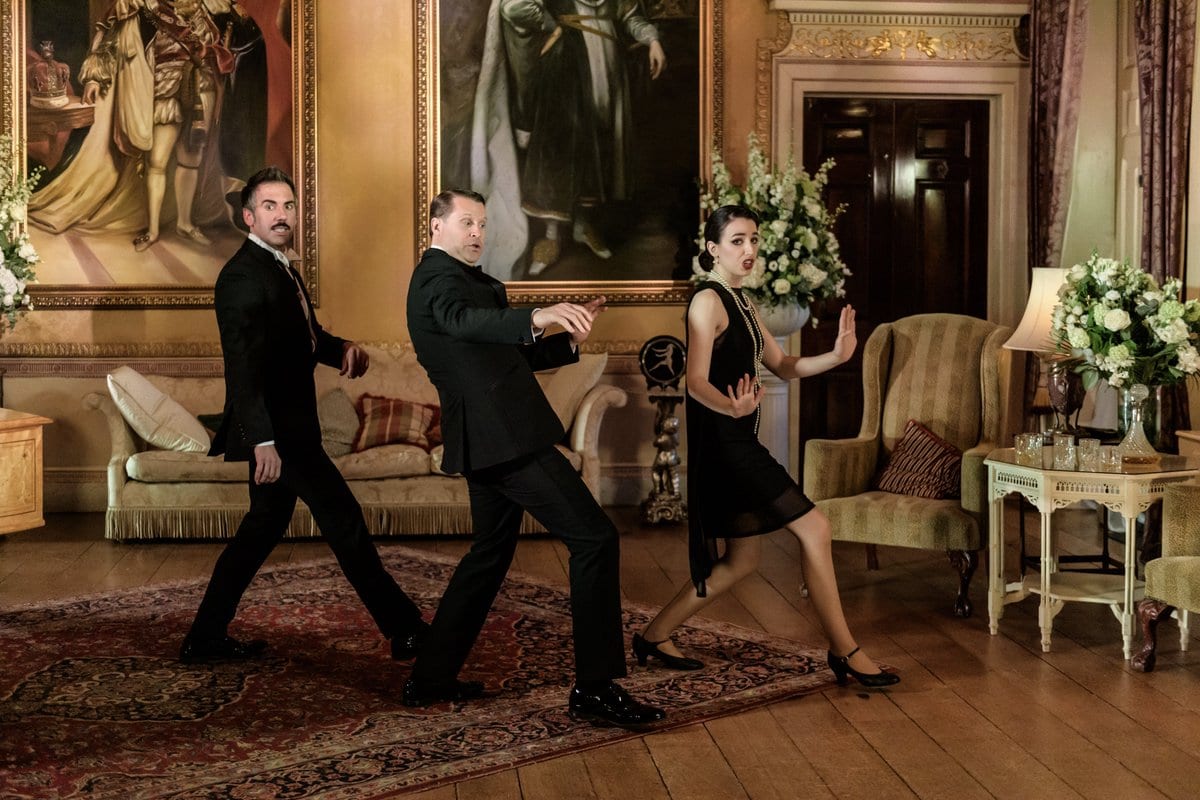I had never heard of The Sorrows of Satan before this year. If it weren’t for the Coronavirus lockdowns, I doubt that it’s the kind of show that would have crossed my radar, if I’m honest. But, one of the few benefits of online theatre has been trying new shows I wouldn’t have gone to see live before, due to high ticket prices and other accessibility difficulties. It also didn’t hurt that my favourite performer, Molly Lynch (The Last Five Years, Sunset Boulevard), starred in this!
The Sorrows of Satan (with book and lyrics by Michael Conley and music by Luke Bateman) is a musical play adaptation of the novel of the same name by Marie Corelli. Corelli’s book, published in 1895, is widely considered to be one of the world’s first bestsellers, though it was panned by critics at the time.
Set in 1920s London, the play follows down-on-his-luck playwright Geoffrey Tempest, who has just been kicked out of his home. In order to prove himself to the theatre community, he stages a rehearsed reading of his musical play, The Sorrows of Satan. But when his patron, Prince Lucio Rimanez, suggests significant changes, Tempest must decide whether to hang on to his artistic integrity, or sell out for fame, money and the love of his leading lady.
The standout performances of the show are definitely Michael Conley’s Lucio and Molly Lynch’s The Woman (actually three different women). Conley clearly revels in his devilish role, and plays it with incredibly camp aplomb, and Lynch thrives in multi-roling, showing off various accents alongside her impressive vocals and comedic timing. Unfortunately, Luke Bateman’s Tempest is overshadowed by these two, but still delivers a stellar performance as the naïve playwright. Rounding off the quartet is Stefan Bednarczyk as mute piano player Amiel, who does a lot with very little material.
The filming location of Brocket Hall is an inspired choice, as the grandeur of the setting really suited the show.
The Sorrows of Satan utilises a “play within a play” structure, with the performative events interwoven cleverly with the main play, and the line between the two becomes increasingly blurred as the show goes on. Despite there being so much going on, the plot feels fairly thin- especially throughout the first act of the show. It’s fair to say that Satan definitely focuses more on narrative themes than it does plot.
A running gag in the show is that it’s a “play with music” rather than a musical, which does prove appropriate for the overall result. There are actually very few songs and, by design, most have the same melody (deliberately demonstrating Tempest’s lack of skill as a playwright). The Sorrows of Satan‘s songs were certainly more entertaining, but the music wasn’t as memorable as I would expect from a musical. For me, the extended sections of dialogue made the show drag in places.
The comic aspect of the show also wasn’t quite what I had originally expected. The humour is more dry satire than laugh-out-loud funny. I spent a lot of the show wondering if I wasn’t getting the jokes; there were moments that made me crack a smile, but not much more than that.
Overall, whilst well performed, The Sorrows of Satan didn’t quite land in the way I think was intended. Part of me wonders if the humour of the play didn’t translate to the new, digital format: perhaps Satan is the kind of show that needs to be seen live to be fully appreciated.
Words by Joanne Elliott.
Support The Indiependent
We’re trying to raise £200 a month to help cover our operational costs. This includes our ‘Writer of the Month’ awards, where we recognise the amazing work produced by our contributor team. If you’ve enjoyed reading our site, we’d really appreciate it if you could donate to The Indiependent. Whether you can give £1 or £10, you’d be making a huge difference to our small team.

